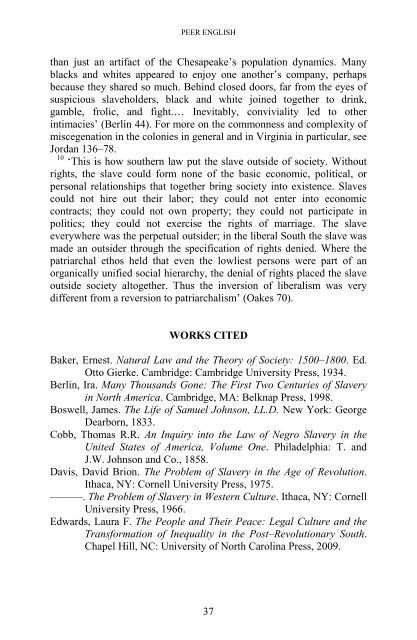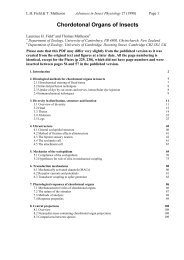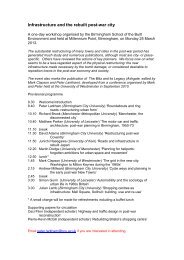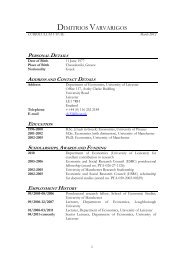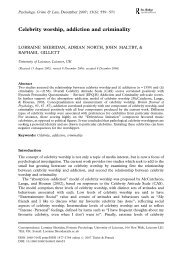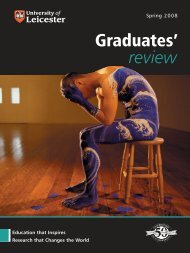From Natural Law to Natural Inferiority
From Natural Law to Natural Inferiority
From Natural Law to Natural Inferiority
Create successful ePaper yourself
Turn your PDF publications into a flip-book with our unique Google optimized e-Paper software.
PEER ENGLISHthan just an artifact of the Chesapeake’s population dynamics. Manyblacks and whites appeared <strong>to</strong> enjoy one another’s company, perhapsbecause they shared so much. Behind closed doors, far from the eyes ofsuspicious slaveholders, black and white joined <strong>to</strong>gether <strong>to</strong> drink,gamble, frolic, and fight.… Inevitably, conviviality led <strong>to</strong> otherintimacies’ (Berlin 44). For more on the commonness and complexity ofmiscegenation in the colonies in general and in Virginia in particular, seeJordan 136–78.10 ‘This is how southern law put the slave outside of society. Withoutrights, the slave could form none of the basic economic, political, orpersonal relationships that <strong>to</strong>gether bring society in<strong>to</strong> existence. Slavescould not hire out their labor; they could not enter in<strong>to</strong> economiccontracts; they could not own property; they could not participate inpolitics; they could not exercise the rights of marriage. The slaveeverywhere was the perpetual outsider; in the liberal South the slave wasmade an outsider through the specification of rights denied. Where thepatriarchal ethos held that even the lowliest persons were part of anorganically unified social hierarchy, the denial of rights placed the slaveoutside society al<strong>to</strong>gether. Thus the inversion of liberalism was verydifferent from a reversion <strong>to</strong> patriarchalism’ (Oakes 70).WORKS CITEDBaker, Ernest. <strong>Natural</strong> <strong>Law</strong> and the Theory of Society: 1500–1800. Ed.Ot<strong>to</strong> Gierke. Cambridge: Cambridge University Press, 1934.Berlin, Ira. Many Thousands Gone: The First Two Centuries of Slaveryin North America. Cambridge, MA: Belknap Press, 1998.Boswell, James. The Life of Samuel Johnson, LL.D. New York: GeorgeDearborn, 1833.Cobb, Thomas R.R. An Inquiry in<strong>to</strong> the <strong>Law</strong> of Negro Slavery in theUnited States of America, Volume One. Philadelphia: T. andJ.W. Johnson and Co., 1858.Davis, David Brion. The Problem of Slavery in the Age of Revolution.Ithaca, NY: Cornell University Press, 1975.———. The Problem of Slavery in Western Culture. Ithaca, NY: CornellUniversity Press, 1966.Edwards, Laura F. The People and Their Peace: Legal Culture and theTransformation of Inequality in the Post–Revolutionary South.Chapel Hill, NC: University of North Carolina Press, 2009.37


